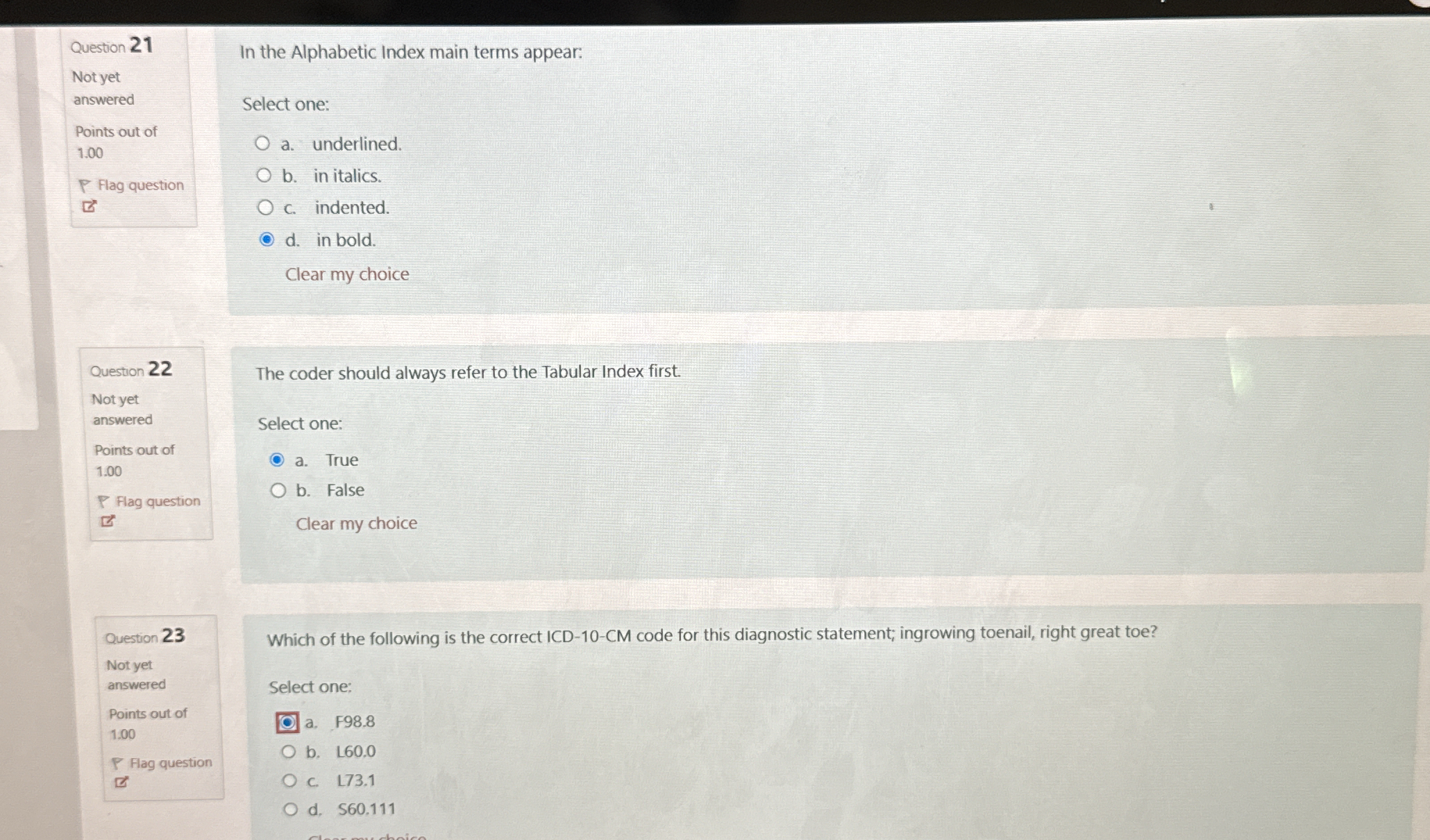In the Alphabetic Index, main terms appear: Select one: a. underlined. b. in italics. c. indented. d. in bold. The coder should always refer to the Tabular Index first. Select one:... In the Alphabetic Index, main terms appear: Select one: a. underlined. b. in italics. c. indented. d. in bold. The coder should always refer to the Tabular Index first. Select one: a. True b. False Which of the following is the correct ICD-10-CM code for this diagnostic statement: ingrowing toenail, right great toe?

Understand the Problem
The questions pertain to medical coding, particularly focusing on the format of entries in an Alphabetic Index, the procedure for coders regarding the use of indexes, and identification of correct ICD-10-CM codes for specific diagnoses.
Answer
Main terms: bold; Tabular first: False; Code: L60.0.
In the Alphabetic Index, main terms appear in bold. The coder should not refer to the Tabular Index first; they start in the Alphabetic Index and confirm in the Tabular Index. The ICD-10-CM code for 'ingrowing toenail, right great toe' is L60.0.
Answer for screen readers
In the Alphabetic Index, main terms appear in bold. The coder should not refer to the Tabular Index first; they start in the Alphabetic Index and confirm in the Tabular Index. The ICD-10-CM code for 'ingrowing toenail, right great toe' is L60.0.
More Information
For coding, it's important to first find the term in the Alphabetic Index and then verify it in the Tabular List. The main terms in the Alphabetic Index are bold, which helps coders quickly find relevant sections.
Tips
A common mistake is to start in the Tabular Index, which can lead to incorrect coding since the Alphabetic Index provides necessary guidance to proper codes.
Sources
- ICD-10-CM Official Guidelines for Coding and Reporting FY 2018 - cdc.gov
- Introduction to Medical Coding (docx) - CliffsNotes - cliffsnotes.com
AI-generated content may contain errors. Please verify critical information